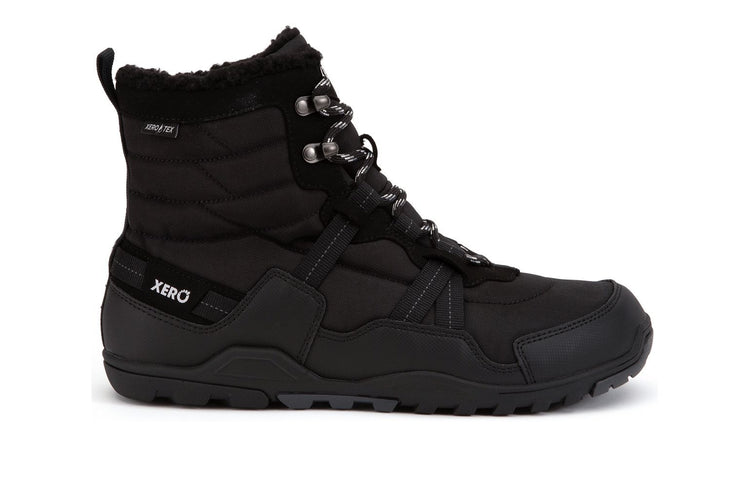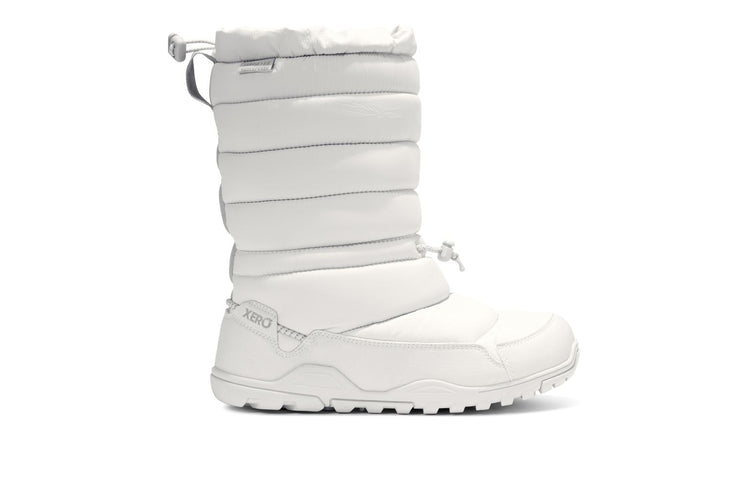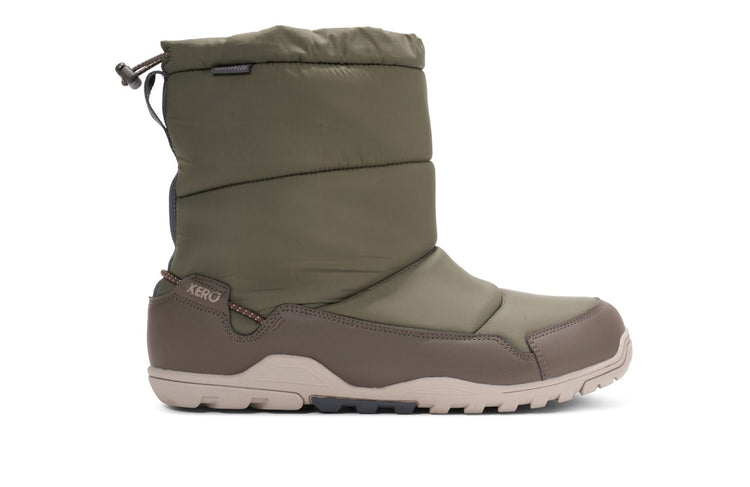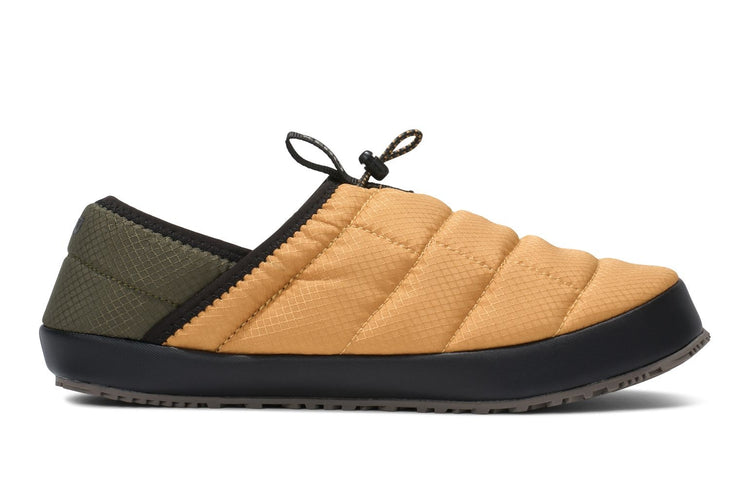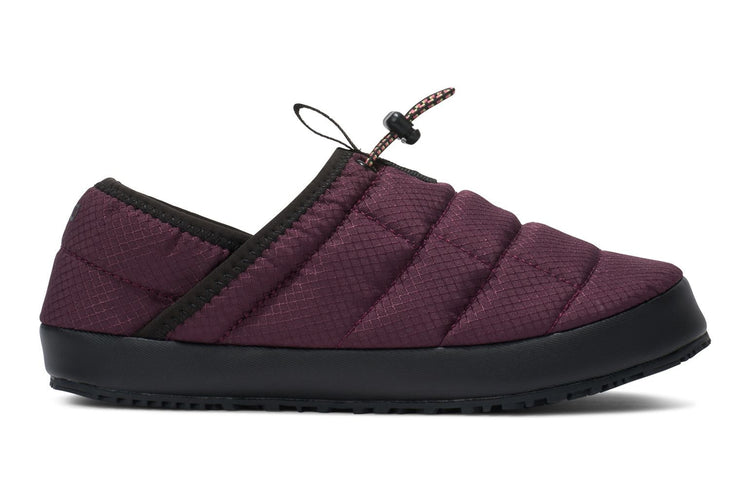latest News
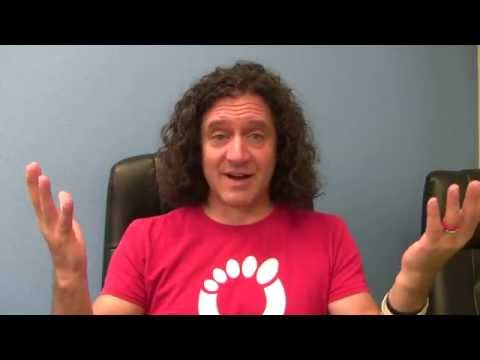
What are zero drop shoes?
"Zero Drop" is a term originally coined by the makers of Altra Shoes to describe footwear where the heel is at the same height as the ball of the foot. This is what your foot does, naturally, when you're standing on a level surface in bare feet.But most running shoes are, essentially, high-heeled shoes, with a "differential" between the height of the heel and the height of the ball of the foot as high as one inch.Now that you can find minimalist shoes, big shoe companies are now joyfully advertising their minimalist shoes as zero drop, or low drop. But does that really matter for you? And are Xero Shoes zero drop, especially the new Amuri Cloud.This video, inspired by a question on our forum, should answer that. What do you think?
University of Colorado Barefoot Running Study
The media is having an anti-barefoot running field day thanks to a study published by some people right up the street from me at the University of Colorado (BTW, I've been living in Boulder for 19 years and nobody has been able to explain why they call the university CU instead of UC.).Each of the dozens of articles about the study has a distinct flavor of elementary school playground taunting, "Nah, nah, nah, nah, boo, boo… barefoot running isn't good for you!"I mean, check out some of the headlines: Debunking the Barefoot Running Myth - Sydney Morning Herald (barefoot running isn't like bigfoot!) Here's Proof Barefoot Isn't Better -- Running Times (Ha! So there!)It almost feels like the press is enjoying creating a backlash to all the "pro" barefoot articles of the last two years, even though in every barefoot article I've read the media insists on publishing "both sides of the story," and includes some doctor who's never run a meter in bare feet and wouldn't know decent barefoot running form if it ran him over, claiming that running without shoes will hurt you, bring shame on your family, and accelerate the coming apocalypse.So, let's take a deep belly breath or two and have a chat about the study. In fact, let's start by talking about studies, in general:Designing a biomechanics study is not easy. Aside from deciding exactly what you want to explore and the best design of the study itself (how you can test it), finding enough of the right kind of participants is often tricky, if not impossible.It's even more difficult to design a study that isn't artificial in some way. That is, it's showing effects in a lab that may not be relevant in the real world.And, even more, many studies, while interesting, may not be relevant to the broader population. (Whenever someone quotes a study, or even just the habits, of elite marathoners, I respond "Unless you're 5'5" and weigh 105 pounds and run at 13 miles per hour for two hours... WHO CARES what those guys do?)Finally, the way the media picks up a study -- this one or any of the previous barefoot studies -- often adds some spin that isn't in the actual study.All of the issues I just raised are relevant as we take a gander at the CU study. BTW, if you want to see a lively and cogent critical look at the study, you can't go wrong with reading the comments on the New York Times article about it. Frankly, this post probably won't be as lucid as some of the comments there.Okay, let's jump into it… The gist of the study:"In the study, 12 subjects with substantial barefoot running experience ran at 7.5 MPH with a mid-foot strike pattern on a motorized treadmill, both barefoot and in lightweight cushioned shoes (~150 g/shoe, 5.4 oz). In additional trials, they attached small lead strips to each foot/shoe (~150, ~300, ~450 g). For each condition, they measured the subjects’ rates of oxygen consumption and carbon dioxide production as an index of metabolic cost.”And the results:a) For every 100g (3.5oz) (the average weight of a deck of playing cards) added per foot, energy cost increases by approximately 1% whether running barefoot or shod.b) Running barefoot and in lightweight shoes do not significantly differ in energy cost.c) When controlling for shoe/foot mass, running in lightweight shoes requires ~3-4% less energy than running barefoot."Now, let the fun begin. Can you find the "confounds" (the factors in the study that might affect the results, or the interpretation of the results)?I'll start. Let me know if you find more.1) How did they determine that the 12 subjects had "substantial barefoot experience?" Well, the study says, “8 km/week barefoot or in minimal running footwear (e.g. Vibram Five Fingers) for at least 3 months out of the last year.”Does 3 months out of the last 12 really equal "substantial?" I've been barefoot for 3 years, and I'm STILL improving my form.And if that three months was wearing VFFs or minimalist shoes, that counts as "barefoot experience" Uh…As I've commented, and as the American Council on Exercise showed, and as Pete Larsen from www.runblogger.com captured on video: VFFs are not the same as barefoot.Now the researchers did verify that the subjects all ran with a "midfoot or forefoot" landing. I know that Lee Saxby, the spokesman and coach from Vivobarefoot would have an issue with that. He doesn't think midfoot is proper barefoot form (there's some debate about that, but it's besides the point at the moment).2) They ran on a treadmill. Look, I get that testing runners on an actual track is hard and expensive, but running on a treadmill is not the same as running on the ground, end of story. It may give some useful data, but if it walks like a duck and quacks like a duck, but the duck is on a treadmill… hmmm, that analogy isn't quite working, but you know what I mean.I did some high-speed video analysis of my running at the Monfort Human Performance Lab. I hit 21 mph on that treadmill. I can tell you that when I'm on a treadmill, my stride is different than on the track. I overstride so I can "catch" the treadmill belt, for example.3) To simulate a running shoe's weight, the researchers put lead weights on the top surface of the runners' feet. Do you think some small weights pressing down on your foot is different than having that same amount of weight distributed evenly, and mostly under your foot, thanks to the design of the shoe? I do. Does that matter? Could be. Is there a way to check… not easily.4) The runners were at 7.5 miles per hour. That's slow for an elite runner -- about 200 meters in a minute, a quarter mile in 2 minutes, a mile in 8 minutes -- but fast for most casual runners. This raises a few questions:a) How was that pace compared to the runners' usual training pace? b) Does speed make a difference? c) What about turnover, or cadence? Were those controlled and the same when the runners were barefoot vs. shod?Got me. But, suffice it to say, we're seeing the artificial quality of the study.5) Oh, this wasn't mentioned above, but I'll give it to you now: the runners were wearing yoga socks. "“For the duration of the experiment, subjects wore very thin, slip-resistant yoga socks for safety and hygienic purposes.”Hygienic purposes? Uh, some 409 and a paper towel would handle any "hygiene issues." And "safety"? If you read the study, one aspect of "safety" is "avoiding blisters."Boy, where to start on that one? We know that socks does not equal barefoot, and we also know that if you get blisters when you run barefoot, you're doing something wrong. So, this brings us back to number 1 -- how experienced were these runners really?6) The study measured oxygen consumption and carbon dioxide production. Okay, that's a fine way to measure efficiency, based on the idea that using less oxygen and producing less CO2 means you're using less effort, and that equals being more efficient.But here's a question: So what?For one: does using less energy equate to faster times? It seems like it might, but that's not a given.Does the amount of extra energy being used by *some* of the barefoot runners have any relevance to the average runner? Someone for whom 7.5 mph is too fast… or even too slow?7) Oh, here's a favorite. The runners in the study wore an ultra-lighweight racing flat. Most runners wouldn't wear those. And most runners with no barefoot experience wouldn't find those any friendlier than being shoe-free.8) One other thing: A hallmark of the scientific method is reproducibility. Just because one lab gets a result, that doesn't mean the question is resolved. When a study is reproduced in independent labs and the same (or very similar) result is obtained... then you know you've got something.What if the study is correct, though? What if barefoot running is less efficient than shod running?The only answer I can come up with is: Who cares?I don't mean that it's not important to know. I mean, literally, who should care?If you never race, you'll never notice any difference in efficiency (assuming, again that "decreased efficiency" = slower times).Besides, there are MANY other reasons to run with bare feet than the idea that it's more efficient... many that have barely been touched on (Dr. Michael Merzenich and I have had some interesting chats about how being barefoot could help the elderly in various ways). Personally, I didn't make the switch for efficiency's sake. In fact, for me, as a sprinter, I know I'm more effective in spikes than barefoot. I switched because it helped me correct some form problems, eliminated injuries I was getting, turned running from a chore into an enthralling discovery, and, more importantly... WAS FUN.Don't get me wrong, I'm thrilled that my Boulder neighbors are researching barefoot running. And while this is the first published study, I know they have more coming and I'm looking forward to those.And I'm certainly not blaming them for how the media is handling the story.My only interest is the continued exploration, conversation, and understanding of efficient movement, running for speed and/or distance, and the ways of teaching and exploring barefoot running (and walking and hiking).No one study can perfectly address all of the open questions. But the almost combative attitude where everyone wants to jump on some one-sided "We're better!" bandwagon certainly doesn't help.Suffice it to say, this study is not the death knell of barefoot running that many media outlets are portraying it to be (because, you know, controversy is more important than truth if you're trying to sell papers).Now, if you'll pardon me, I have to burn off some of my frustration by putting on some yoga socks and minimalist shoes and going for a barefoot run.p.s. (added on 4/4/2012):I just realized that the conclusion of the study was WAY off base!Here's whyThe researchers think that the improved efficiency of the shoes came from the PADDING absorbing some of the stress that the muscles have to handle when you're barefoot.In other words, the ENTIRE efficiency effect could be ALL about the padding and have nothing to do with weight. The weight issue would only be valid if they tested multiple shoes of the same weight with different types of padded outsoles and got the same results.The content of this post does not constitute and is not intended to be a substitute for professional medical advice, diagnosis or treatment. Always seek the advice of a physician or other qualified health provider with any questions or concerns you may have about your health or a medical condition.
Barefoot in Asia - Regev's Review
I just realized that I have a strange history with barefoot running, barefoot walking, and minimalist shoes.First, like most of us, I spent a lot of time barefoot as a kid in the Summer. I went to a camp in the Pocono Mountains (Camp Shohola just in case any readers also went there) and whenever I had the chance, I was barefoot (made easier by the fact that I spent half of my days doing water sports). I was a competitive diver, too, so that kept me out of shoes.In junior high school and high school, I was a gymnast, so that was even more barefoot time every day.When I was 18, I went to New York City to be a street performer. I had already been doing this in Washington, DC, doing a magic act in Georgetown, and on K Street, near the White House. When I got to NYC, though, I found it much harder to get a crowd and, even worse, within a few weeks, the other street magicians had stolen all my bits! I asked one of the veteran street acts what I should do and he said, "Simple, write an act that nobody would dare steal."I pondered this for a while, until I landed on the answer. I created an act that had a bunch of crazy gymnastics in it (I did a running front flip over someone's head, stealing their hat and placing it on my head while in mid-flip), and a finale where I... wait for it... walked on broken glass in my bare feet.Now let me back up. For the gymnastics part of the act, I wore minimalist shoes. They were some old Adidas (I can't remember the name), with zero-drop, very little toe spring, not much padding. Just enough between me and the ground so I didn't kill my feet. This was in 1980-81, BTW.I loved these shoes. I bought every pair I could find. When I could no longer find them, I asked the local running shoe store what happened and he answered, "Adidas stopped selling them; they were lasting too long."I don't know if his info was accurate but, if it was, it wouldn't be the first time a company pulled a product that didn't wear out or go obsolete fast enough.Luckily, I found a company that sold shoes to prisons (you can find ANYTHING in NYC), and they had the last few pairs of these shoes... I bought them all. And they lasted through some serious abuse.Okay, back to walking barefoot on glass, though. Let's just say that it's part physics, part showmanship, and part some-hard-to-describe-thing that, if I could convince you to jump onto a 3" high pile of shattered beer bottles, you would instantly get a knowing look in your eye and say, "Ahhh... I get it now."In 5 years and thousands of shows, I only got one small cut. But by the end of the day, my feet were FILTHY from being barefoot on the street.CUT TO: Going to Asia in 1989.This is where I got hooked on being barefoot. Aside from the fact that you never wear shoes into almost any building (I was in China, Nepal, India and Thailand), there were plenty of opportunities to be barefoot outside as well. There were also plenty of times where you wanted something on your feet, but not much because it was really hot when I was there, and anything more than a sandal was way too much.When I came back from Asia, I stuck with the habit of removing my shoes whenever I went into someone's home (we've saved a fortune on carpet cleaning by not dragging dirt in from the outside).Okay, so why this long story?Simple, I was reminded of it all when Regev Elya did his review of Xero Shoes, which he took on a 7-month trip through Southeast Asia (I'm SO jealous).Of course, I think that Xero Shoes are the best minimalist shoes for a trip like that... but check out what Regev says.
Barefoot Sandals - the best minimalist running shoes
Every now and then, someone will smugly say to me:"Barefoot Sandals is an oxymoron. If you're barefoot, you're not wearing sandals, and if you're wearing sandals, you're not barefoot!"Yes, technically, that's true. Barefoot is barefoot and shod is shod.And, I'll admit, I'm normally a stickler for grammar. I hate when people say "very unique" (something can't be VERY one-of-a-kind), and don't even get me started on "a whole nother" ("nother" isn't a word! You mean "another whole").But for "barefoot sandals" or barefoot shoes or even bare feet shoes, I'm willing to be a bit more lax, and not just because I'm in the business of making huarache sandals.It's simpler than that.In this case, there's not really much lost when you remove the "implied word": -style.That is, what people would say instead of "barefoot sandals" if they were being more accurate is "barefoot-style sandals," or "barefoot-style shoes," the implication being that this type of footwear is similar in some way to being barefoot.Now the key element to that sentence is "similar in some way," and I'm sure I don't need to tell you that many shoes that advertise themselves as barefoot running shoes are about as similar to barefoot as a pair of stilts (I should make a spoof commercial about barefoot stilts!).Some manufacturers say that their shoes let your foot move as if you're barefoot, or run with natural form (usually meaning forefoot or midfoot striking). Others say that you can feel the ground as if you're barefoot.It won't come as any surprise that I think Xero Shoes does this better than any other product. After all, what could let your foot move more naturally than having nothing on your foot? And what could give you more ground-feel than just a bit of rubber (oh, I know, LESS rubber... but that's a story for another post).One of the first Xero Shoes customers said it best when he came back from his first run, all giddy, "It's just like being barefoot... if they covered the earth in 4mm of rubber!"So, cut some slack to those of us who use phrases like "barefoot sandals" or "barefoot shoes." Let the implied meaning come through. But do demand that those who use the phrase can back it up with a product that lives up to the claim.
Can you really run in huaraches?
When you're used to hanging out with barefoot runners or, at least, with people who've read Born To Run, you forget how "normal people" think.One of the questions I'm most asked by non-barefoot people is: "Can you really run in those?"What amazes me about this question is not how people have forgotten that, for tens of thousands of years, this is exactly what humans wore to run. What amazes me is that I'm usually asked this question by someone who has been watching me run in my Xero Shoes.Silly humans.Well, don't just take my word for it, though.Check out this great race report by Alan Thwaits and see that, yes, you can run in these ;-)


